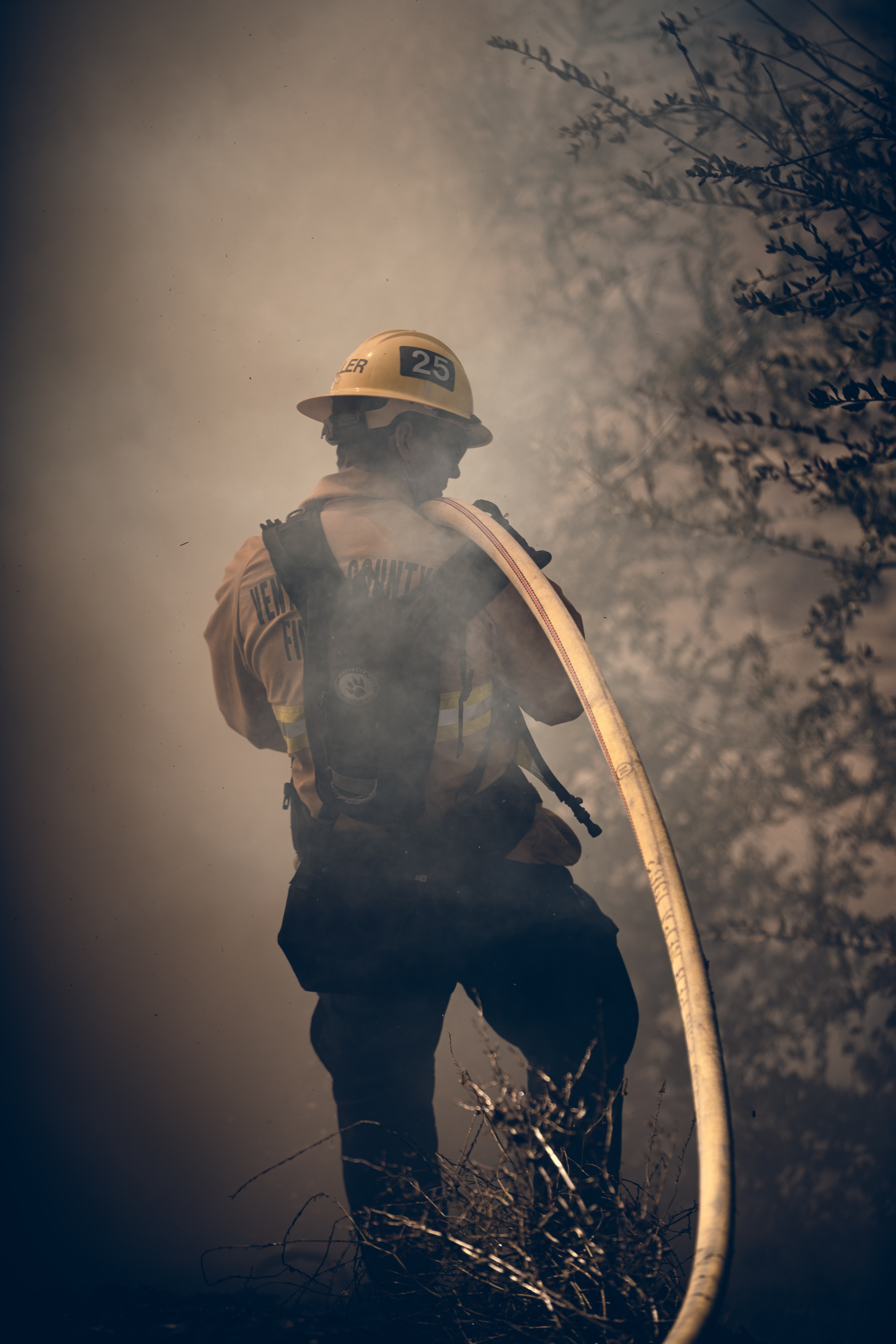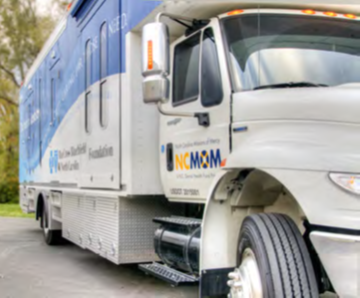Traditionally we think of Mobile Health Clinics (MHCs) being utilized to provide healthcare services to underserved populations. We know that MHCs improve outcomes and reduce costs related to healthcare delivery and provide access to care by delivering services to populations that are historically underserved. Yet how often do we consider the impact MHCs can have on emergency preparedness and disaster relief in times of crisis? Working to help form the United Nations after WWII Winston Churchill famously said, “Never let a good crisis go to waste”. This was not a cynical comment. He was making the clear point that in the wake of World War II allied countries should come together to form an alliance to stave off the potential of future disasters. To be prepared.
Disasters Across the US and Around the World
Among the many organizations who teamed up to help during the recent wildfire crisis in Hawaii, Kaiser Permanente deployed two Mobile Health Vehicle to provide medical services at several locations in Lahaina, the hardest hit city.
hardest hit city.
After 2022’s flooding in Eastern Kentucky Juniper Health’s Mobile Clinic was deployed to provide medical assistance to those affected by the disaster. And Acadian’s Safety Management Systems of Lafayette, Louisiana provides advanced mobile emergency response vehicles for rapid deployment of disaster response to hurricane relief and oil rig disasters.
These are ideal examples of health systems leveraging mobile medical units to aid post-disaster. But what about emergency preparedness? In most of the cases mentioned here mobile clinics scrambled to provide assistance days after the crisis.
Disasters can cripple medical facilities as hospitals and clinics attempt to treat multiple people simultaneously. And what about facilities that have been rendered totally incapacitated during the disaster? The disruption of health systems services will often result in extreme health issues or even death. Providing healthcare during a disaster in a timely manner is difficult or sometimes impossible. These difficulties can include the interruption of resources and lack of timely treatment of many non-typical diseases, some that may last indefinitely, such as environmental poisoning or permanent respiratory illnesses. In 2022 ResearchGate published the study Mobile Clinics: Medical Service Strategy for Disaster Healthcare Response Operation. The study suggests that local healthcare facilities become disrupted during disasters “leaving affected communities without access to sufficient health care”. This leaves the potential for mobile health clinics to provide medical services during disaster response. However, it can often be difficult to form a healthcare response strategy due to the uncertainties of any disaster and how each can vary according to its type and scale. For instance, a hurricane along a coast can cause extreme wind damage as well as significant flooding.
Therefore, a randomly determined model was used to establish the effectiveness of routing mobile clinics to multiple locations with a small number of displaced people. This was compared to medical shelters with high numbers of people. The study’s result suggests a hybrid strategy comprising of an MHC and medical shelters as the best option. MHCs are obviously mobile and can rapidly move from one shelter to the next, and even be available within a reasonable walking distance.
Invest for Preparedness
Mobile health clinics are a highly viable medical service strategy to significantly lessen the impact of unforeseen disasters, particularly when put in place before emergency situations occur. If hospital systems or universities  invest in MHCs for providing medical treatment to underserved people on a regular basis, for which MHCs are originally intended, they will be available when disaster strikes. Imagine if mobile medical units were operational in various locations along the usual hurricane paths of the U.S. gulf and eastern coasts, Oklahoma’s Tornado Alley, Western US and Canada’s wildfire regions, California’s earthquake faults and various regions around the globe susceptible to disasters.
invest in MHCs for providing medical treatment to underserved people on a regular basis, for which MHCs are originally intended, they will be available when disaster strikes. Imagine if mobile medical units were operational in various locations along the usual hurricane paths of the U.S. gulf and eastern coasts, Oklahoma’s Tornado Alley, Western US and Canada’s wildfire regions, California’s earthquake faults and various regions around the globe susceptible to disasters.
Communities affected by disasters can benefit from the resources of mobile clinics and their trained teams during wildfires, earthquakes, flooding or hurricanes, when local healthcare facilities are damaged, over capacity or accessibility to the public is limited. They can diagnose injuries and illness and then refer patients to accessible emergency medical centers, dispense medications to those cut off from their supply and assist non-emergency patients. There are many types of disasters that can happen anywhere leaving people isolated from urgent medical care. The following table represents a variety of disasters in recent times and how mobile medical clinics responded.
|
Examples of Mobile Health Clinic Implementations during Disaster Response |
||
|
Location |
Type of Disaster |
Type of Service |
| Libya | Civil war | Blast and burn injuries, wounds from gunshots, medical care for specific illnesses. |
| Sichuan, China | Earthquake | Emergency surgeries and head trauma. |
| Aceh, Indonesia | Earthquake and Tsunami | Emergency surgeries, head trauma, diarrhea, respiratory diseases, minor injuries, vaccinations, medical care for chronic conditions. |
| Johor, Malaysia | Flood | Upper respiratory tract infections, musculoskeletal problems, medical care for chronic conditions. |
| Mississippi USA | Hurricane | Common respiratory and skin diseases, minor injuries, vaccinations, medical care for chronic conditions. |
| Boston, USA | Covid-19 Pandemic | Preventive pediatric clinical services |
| USA | Covid-19 Pandemic | Covid-19 Vaccinations |
Table derived from ResearchGate
Conclusion
The global demand for mobile clinics continues to rise and MHCs provide flexible options for treating displaced, vulnerable and isolated populations during times of crisis. This is where the World Health Organization has stepped in to buy mobile clinics and provide them to partners who can most easily identify and reach areas of need. For instance, in 2018 the WHO provided 44 mobile health clinics for serving isolated populations in war-torn Syria to non-governmental health organizations.
Grants and Funding: Implementing effective logistics plans and strategies for preparedness before a disaster strikes is far more cost efficient and responsible than disorganized post-disaster attempts to reach those affected. The following is a short list of mobile health clinic funding sources available to those organizations wishing to broaden their reach to their communities and be better prepared for disaster relief before it happens.
- Beginning in 2024, the Mobile Health Care Act will provide new access grant programs for mobile health clinics. This bipartisan legislation will significantly increase capabilities for Community Health Centers in establishing mobile clinics. Federal funds will be available through the New Access Points Grants program to institute new mobile health care programs.
- The U.S. Department of Health and Human Services and the Health Resources and Services Administration provide MHC funding to support underserved communities previously impacted by disasters.
- HHS also offers technical assistance and help in completing applications to receive grants for mobile health clinics.
- The Mobile Healthcare Association states that exclusive grant opportunities for mobile health programs will grow and thrive.
Sources include:
- Direct Relief
- MJH Life Sciences AJMC®
- ResearchGate
- Safety Management Systems
- Spectrum News
- World Health Organisation
- ResearchGate citation: Maghfiroh, M.F.N., & Hanaoka, S. (2022). Mobile clinics: Medical service strategy for disaster healthcare response operation. Journal of Industrial Engineering and Management, 15(3), 470-483. https://doi.org/10.3926/jiem.3941